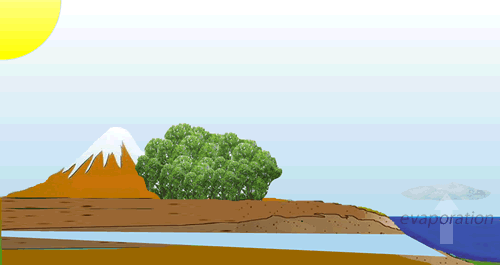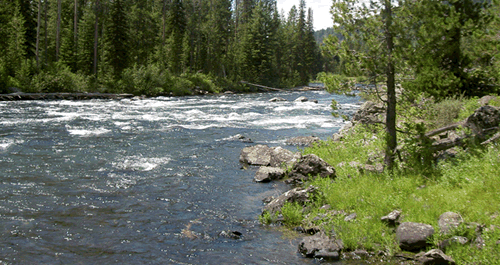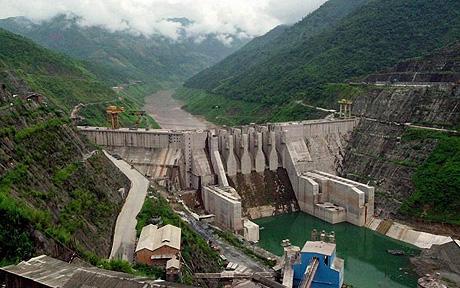Hydroelectricity- not all good! |
|
When a river runs through more than one country a problem occurs with its usage. The Mekong is one example of this. |
 |
This article appeared in The Telegraph Wednesday 02 January 2013 China halts £20bn dam projectChina has suspended a £20bn hydropower project because of environmental concerns, in a sign of the growing power of the country's green lobby.
|
Dachaoshan dam in the Yunnan province, China Photo: AP |
|
|
Chinese dams blamed for Mekong's bizarre flow
Giant Chinese dams on the headwaters of the mighty Mekong River in southeast Asia are being blamed for sudden bizarre fluctuations in the flow of the river in recent weeks. The river is the region's largest and many millions of people rely on its flow. Rapid blastingThe last time the Mekong saw exceptionally low flows was in 1993, during the filling of the Manwan dam. The even larger Dachaosan dam completed in 2003 could be the cause of the new low levels. Reversed riverMost of the fish reproduce in forests in central Cambodia. These flood every year when the Tonle Sap, a tributary of the Mekong, is swamped by the main channel, reverses direction and backs up into the forests. A nightmare scenario for fisheries would see the Tonle Sap ceasing to reverse its flow. |
|
The first effect of a dam is to alter the pattern of disturbances that the plants and animals of a river have evolved for. Many aquatic animals coordinate their reproductive cycles with annual flood seasons. Every flood is valuable in that it takes nutrients from the land and deposits them in the river, providing food for the stream's residents. Floods also provide shallow backwater areas on vegetated and shaded riversides; the young of many animals depend on these backwaters to protect them from large predators.
As an example, a fish on a certain river may only reproduce during April of every year so that its offspring will have abundant food and places to hide. If the flood never comes because a dam holds the river back (because people want the water for themselves), the offspring may be produced during a time when they cannot possibly survive. If the fish can wait until the next flood, which may be in July or may be in October, its young will be born during the wrong time of year, and will have to contend with the absence of their normal food supply and temperatures for which they are not prepared.
Vegetation, too, depends upon these regular cycles of flood. Quite often, people will decide that they can spare no water at all and no flooding will occur. Or they may have built the dams specifically to stop flooding, so they can build houses in the floodplains. When this happens, riparian vegetation, the vegetation bordering the river, changes forever. An example of this may be found in much of the Southwest United States, where enormous floodplains of cottonwood and marsh have been replaced by dry, barren areas of tamarisk and grass.
Click to see how humans can harness the power of the Water Cycle to generate power.
1) a)What is the Water Cycle?
b) Explain the difference in states as water moves along the Water Cycle from liquid, to gas and sometimes to solid..

6) a) How have local fish and vegetation adapted to regular periods of flooding along the Mekong?
b) How does a dam change the pattern of flooding along the Mekong and what is the impact on local fish populations?
8) Consider the image of a river and a dam on the right.
a) How does a dam change the surface area of the body of water?
b) What impact does this have on evaporation?
c) How do you think the local Water Cycle may change as a result of building a dam?
d) What happens to the vegetation that is submerged when the dam is flooded?
e) What gas is produced when organic matter decomposes in the absence of oxygen? Is this gas a greenhouse gas? Explain.
f) A dam is considered to be a huge store of solar energy. Explain why with referrence to power generation?

